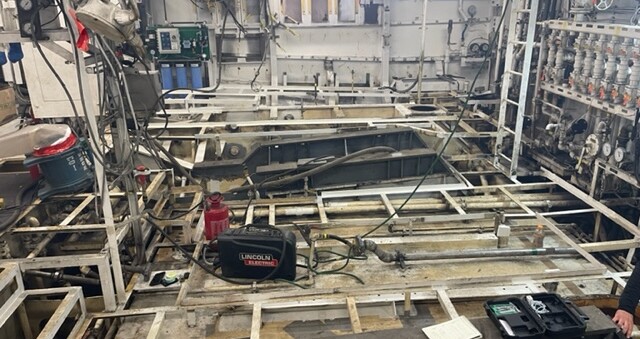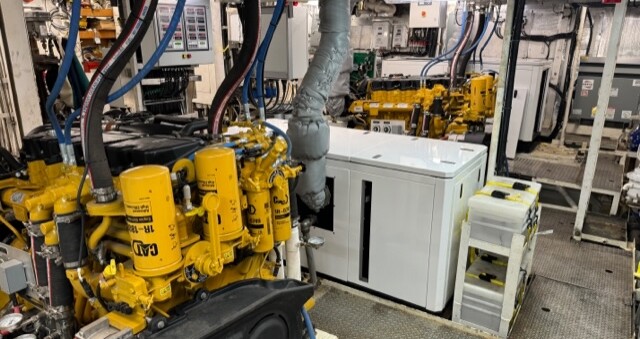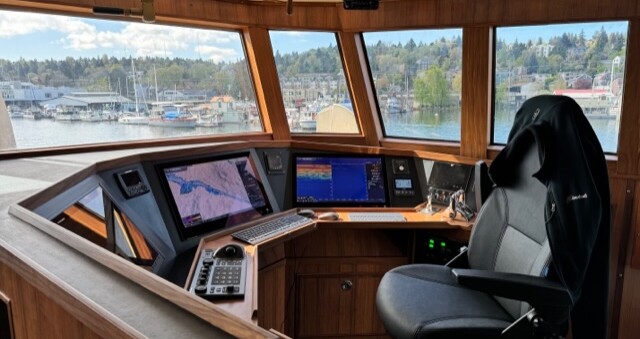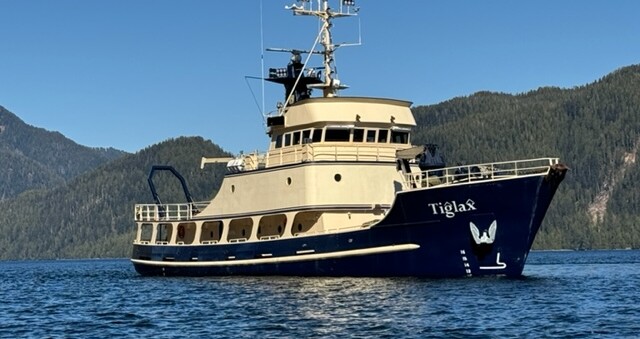The 122’ x 32’ x 11’ Tiglax left the Snow & Co. shipyard in Seattle, Wash., the second week in April on its way to its homeport of Homer, Alaska. Since then, it has probably gone out to the Bering Sea, where it spends much of its time conducting fisheries and other scientific research along the Aleutian Chain.
Leaving Snow & Co., the Tiglax (the name is Aleut for eagle) appeared to be very much the same vessel that arrived six months earlier — granted, now with a new coat of paint — but peer a little closer, and it was anything but the same vessel.
Launched in April 1987 at Moss Point Marine in Escatawpa, Miss., and commissioned in July 1987 by the U.S. Fish and Wildlife Service, the Alaska Maritime National Wildlife Refuge's research vessel accommodates a crew of six and up to 16 passengers or researchers.
There’s a helicopter deck and 4,800 cubic feet of hold space. Wet and dry laboratories are available, as well as various types of processing equipment for scientific research of sea life.
The Tiglax would typically spend 160 to 200 days at sea, covering up to 15,000 miles after leaving Homer at the western end of the Aleutian Chain, then traveling to Attu Island at the Aleutian Chain’s eastern end and sometimes up to St. Lawrence Island in the northern area of the Bering Sea. Ask any commercial fisherman who has worked in those waters, and they will tell you that time spent there quickly wears down man and vessel.
That explains why the work that was to be done on the Tiglax at Snow & Co. “is the most it’s ever had done to it,” said Snow & Co.’s project manager, Tommy Carroll. Work on the Tiglax started with 5 weeks of dry-docking when high-powered transducers were installed, shafts and props replaced, rudders repaired, and the entire boat was painted. “Then the boat came back to Snow, and the real work started,” said Carroll. “This was a full-scale rip out.”

It was the end of September when the rip-out started with “four to five weeks of complete demolition,” including “ripping out everything in the pilot house, pulling out the entire engine room and all of the exhaust system” and taking out and replacing all insulation throughout the boat.
On deck, a new A-frame would be installed, winches modified and the windless sent to Coastal Marine Equipment in Gulfport, Miss., for full refurbishment. The crane was refurbished by Maximum Performance Hydraulics in Seattle. Down below, two new 500-hp Caterpillar C-18 engines went down on engine mounts, as well as two new 99-kW gensets that came with sound enclosures. “In the engine room, you can now have a normal conversation,” said Carroll after the work was completed.
The engine room has new fire suppression and seawater systems and “we redid the refrigeration,” added Carroll. A new fire detection system is now throughout the boat, along with all new wiring. “Pulled out a ton of wiring,” reflects Carroll.

Crew accommodations weren’t ignored. Heating systems were torn out and replaced in every room. “One person replaced the entire heating system. It took six months,” noted Carroll. Now there’s also a new communications system with Internet and phones in all the rooms — 24 phones, said Carroll. Ensuring that the crew always has good food, the galley received a new range.
“The wheelhouse,” said Carroll, now “looks fabulous.” Work there started by removing everything but the radars. “They wanted to keep them because they just purchased them.” Otherwise the “wheelhouse was a blank slate.” Now it has a new custom designed dash, new steering system, pilot chair, computers and new exterior and interior lighting. Wheelhouse windows were also replaced and modified before the helm so there’s an unobstructed view.
Outside are all new antennas, lighting and the mast was stripped and rebuilt.
The Tiglax leaves Snow & Co. “a very seaworthy boat,” noted Carroll, who also said the Tiglax “is the biggest job we’ve ever done for a single boat.”








